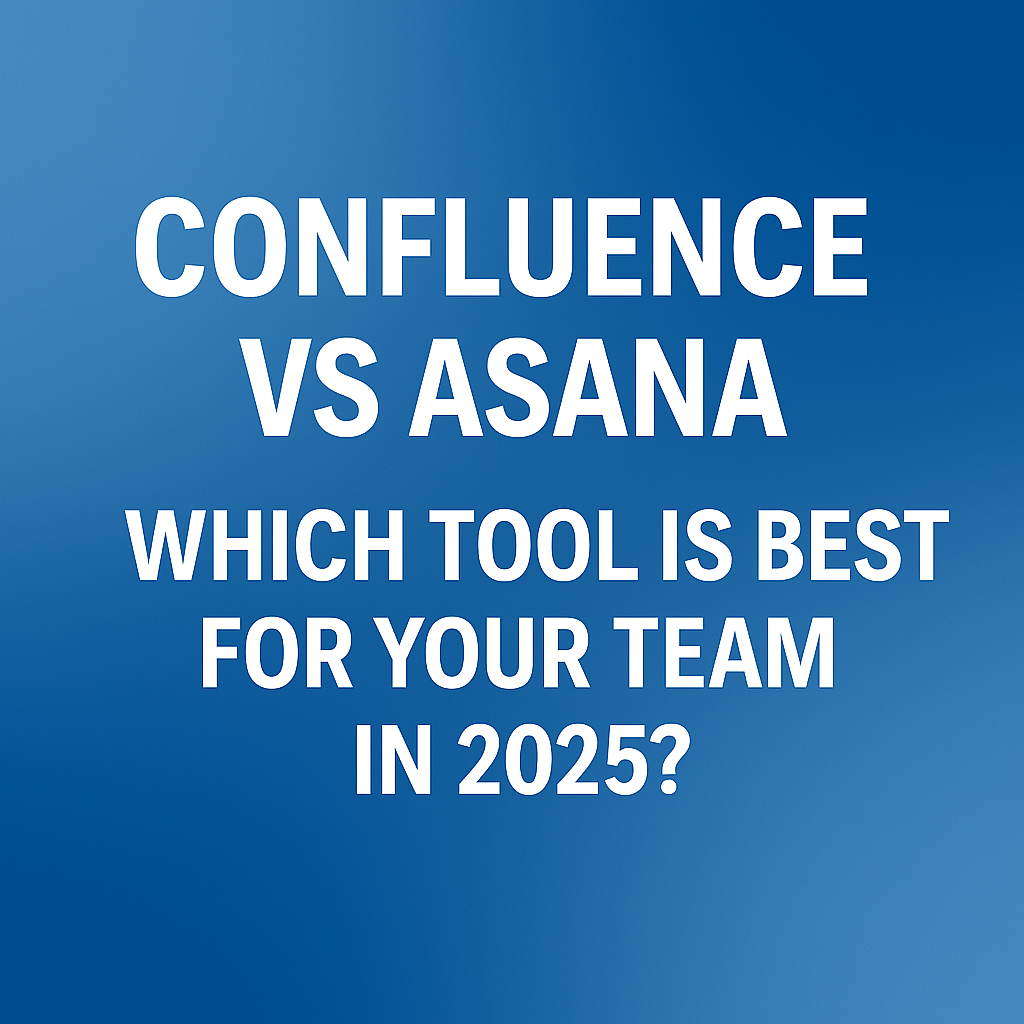In today’s dynamic work environment, choosing the right collaboration and project management tool is essential for productivity and team alignment. Two popular platforms that businesses often compare are Confluence and Asana. Each serves a distinct purpose, but there is some overlap that can confuse teams looking to streamline workflows. In this article, we compare Confluence vs Asana based on functionality, use cases, features, pricing, and more—to help you make an informed choice in 2025.
Contents
What Is Confluence?
Confluence is a team collaboration software developed by Atlassian. It focuses on knowledge management, documentation, and collaborative content creation. It integrates seamlessly with other Atlassian tools like Jira and Trello.
Key Features of Confluence
- Spaces and pages for structured documentation
- Real-time editing and commenting
- Integration with Jira, Trello, Slack, Google Drive, and more
- Templates for meeting notes, project plans, and product documentation
- Advanced permission settings and version history
Ideal Use Cases
- Internal knowledge base
- Company intranet
- Product requirement documentation
- Meeting notes and team wikis
What Is Asana?
Asana is a project and task management tool designed to help teams organize work, track progress, and meet deadlines efficiently. It excels in workflow management and team coordination, with an intuitive interface.
Key Features of Asana
- Tasks, subtasks, and recurring task features
- Timeline, calendar, Kanban board, and list views
- Project templates for marketing, product launches, and more
- Workflow automation using rules and triggers
- Integration with over 100 tools including Slack, Zoom, Google Workspace, and Salesforce
Ideal Use Cases
- Agile project management
- Campaign planning and execution
- Task tracking for cross-functional teams
- Workflow automation for repetitive tasks
Confluence vs Asana: A Head-to-Head Comparison
| Feature | Confluence | Asana |
|---|---|---|
| Primary Function | Knowledge management & documentation | Task & project management |
| Interface | Document-centric (wiki style) | Task-centric (Kanban, list, calendar views) |
| Best For | Documentation, policies, team wikis | Task assignments, timelines, tracking deliverables |
| Collaboration | Comments on documents, inline discussions | Comments on tasks, project chat |
| Integration | Deep integration with Jira and Atlassian suite | Extensive third-party integrations |
| Customization | Templates and custom page layouts | Custom workflows and automation |
| Learning Curve | Moderate | Easy to learn for beginners |
| Mobile App | Yes | Yes |
Pricing (As of 2025)
Confluence Pricing
- Free: Up to 10 users, basic features
- Standard: About $6.05/user/month
- Premium: About $11.55/user/month
- Enterprise: Custom pricing
Asana Pricing
- Basic: Free for individuals and small teams
- Premium: About $10.99/user/month
- Business: About $24.99/user/month
- Enterprise: Custom pricing
Note: Prices are subject to change. Always check the official websites for the most up-to-date pricing.
When to Choose Confluence
Choose Confluence if your team:
- Prioritizes content and documentation
- Needs a centralized place to store knowledge
- Works with Jira or Trello
- Requires a strong version control system
When to Choose Asana
Choose Asana if your team:
- Manages complex projects and timelines
- Needs real-time task tracking and collaboration
- Prefers visual project planning (e.g., Gantt charts, boards)
- Wants robust automation and reporting
Can You Use Confluence and Asana Together?
Yes. Many teams use Confluence and Asana in tandem:
- Use Confluence to document project briefs, meeting notes, and SOPs
- Use Asana to assign tasks and track project progress
- Integrate the two tools to link documentation directly to tasks
Final Thoughts
Confluence and Asana serve complementary purposes. Confluence is your team’s brain, while Asana is its engine. For documentation and internal communication, Confluence excels. For managing timelines, deliverables, and accountability, Asana is a top choice. Depending on your team’s size, needs, and workflow complexity, you might choose one or both tools.
For maximum productivity, evaluate the specific goals of your team and consider starting with free versions of both to see what fits best.

